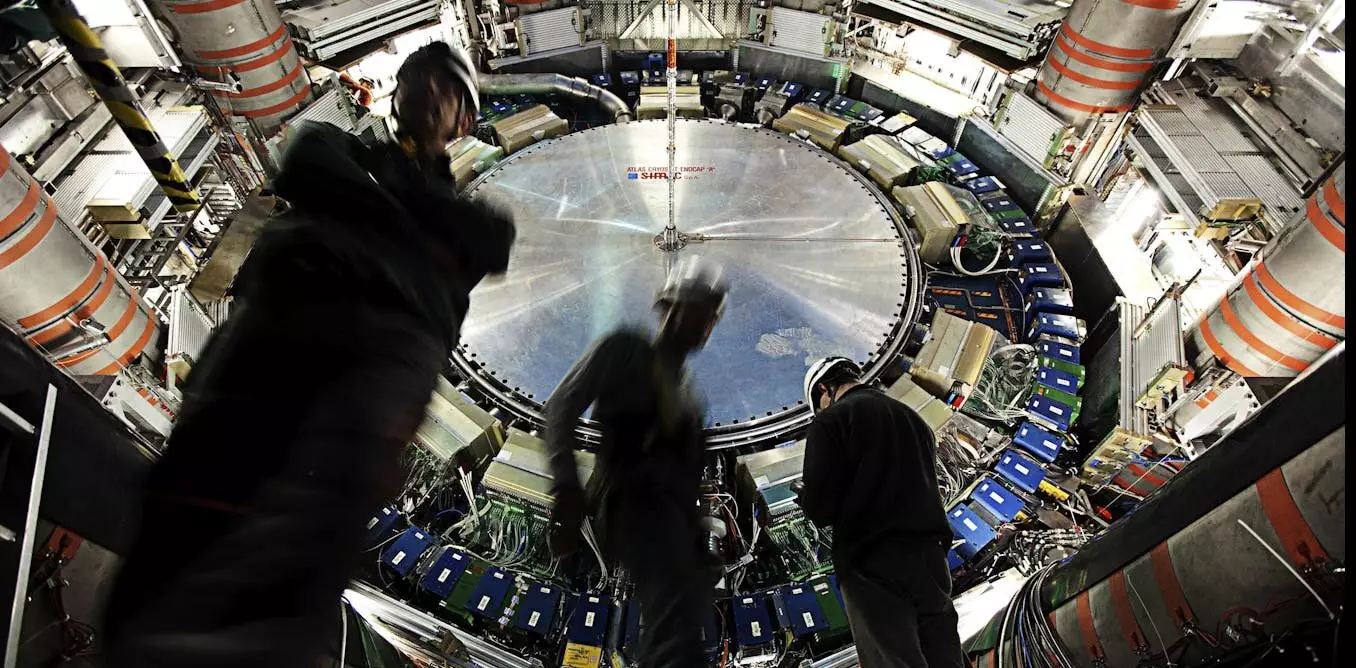Quantum entanglement stands as one of the most bewildering and remarkable phenomena within the realm of physics. At its core, entanglement suggests that two or more objects can be intrinsically linked, regardless of the distance separating them. In the classical purview, physical entities can be categorized as either separate or connected; however, entangled particles subvert this binary thinking. Without any discernible physical connection, entangled particles exhibit behaviors that allow the state of one to instantaneously reflect the state of another, no matter the spatial separation.
The study of entanglement has predominantly revolved around photons, which are low-energy particles of light, primarily because these particles are relatively easy to manipulate and measure. Excitingly, recent research emerging from the ATLAS experiment at the Large Hadron Collider (LHC) in Geneva marks a groundbreaking milestone: the observation of entanglement in top quarks, the heaviest particles known to mankind. This pivotal study, shared in a recent publication, offers both insights and excitements for researchers delving into quantum mechanics.
The world of particle physics is intricate and multifaceted, with quarks serving as fundamental building blocks of matter. Notably, top quarks are more than just a theoretical curiosity; they are incredibly significant due to their immense mass—roughly 184 times that of a proton. The existence of these particles raises profound questions about the fabric of our universe, particularly regarding the forces at play and the possible existence of new physics beyond our current understanding.
To appreciate the enormity of this discovery, one must navigate the foundational concepts of matter. Matter comprises molecules, which are made of atoms, and central to the atomic structure are electrons orbiting a dense nucleus composed of protons and neutrons. Delving deeper, protons and neutrons themselves are made up of quarks—the six flavors of which include the infamous top quark. Its unparalleled mass is a tantalizing puzzle that physicists are keen to solve, as it may hint at additional forces or interactions yet to be discovered.
The implications of observing entanglement among top quarks extend beyond theoretical musings. This breakthrough illustrates how entanglement can manifest in high-energy environments, which differ significantly from the low-energy contexts typically associated with entangled phenomena. In classical physics, experiments often necessitate meticulously controlled conditions, often at ultra-low temperatures, to observe entangled behaviors. However, the LHC provides a unique platform for observing these quantum relationships amidst energetic collisions, thus enriching our understanding of quantum mechanics.
While top quarks are unlikely to become the cornerstone of portable quantum technology, their role as experimental tools remains vital. The distinct characteristics of top quarks enable physicists to explore entanglement in ways that six lighter quark types would not permit. The newfound ability to analyze entangled pairs of top quarks opens doors to experimentation that could unveil new physics and expand our comprehension of quantum phenomena.
Notably, the conceptual frameworks surrounding entanglement have permeated popular culture, particularly within the realms of science fiction. A prominent example is the recent adaptation of Liu Cixin’s “3 Body Problem,” which illustrates entangled technology as a means of communication across vast distances. While the narrative employs entanglement creatively, it diverges from the established understanding that entanglement does not facilitate communication in a traditional sense. The laws of quantum mechanics assert that no usable information can be transmitted quicker than the speed of light, reinforcing the notion that while entanglement might appear to permit instantaneous connections, practical applications in messaging remain constrained.
This intersection of science and storytelling highlights the tension between scientific accuracy and creative license. As excitement surrounds these advanced theories, the promise of groundbreaking technologies like quantum computing becomes ever more enticing, even as researchers continue to grapple with the complexities of entanglement itself.
The discourse on quantum entanglement exemplifies the ongoing quest for knowledge within the scientific community. The recent findings related to top quarks present a novel avenue for exploration and experimentation. While the Large Hadron Collider may not offer practical tools for everyday use, its contributions to understanding quantum entanglement enrich the broader narrative of particle physics, steering us toward new discoveries and perspectives on the very nature of reality.
As theorists and experimentalists work collaboratively to unravel the fabric of our universe, one thing remains clear: the profound mysteries of quantum mechanics will undoubtedly continue to challenge us, beckoning future generations of scientists to explore the uncharted territories of the microcosm. With each discovery, we edge closer to comprehending the enigmatic entanglements that govern not just particles, but perhaps the cosmos itself.



Leave a Reply